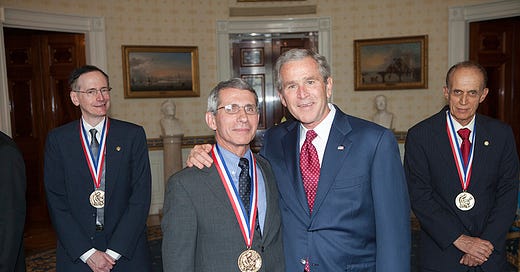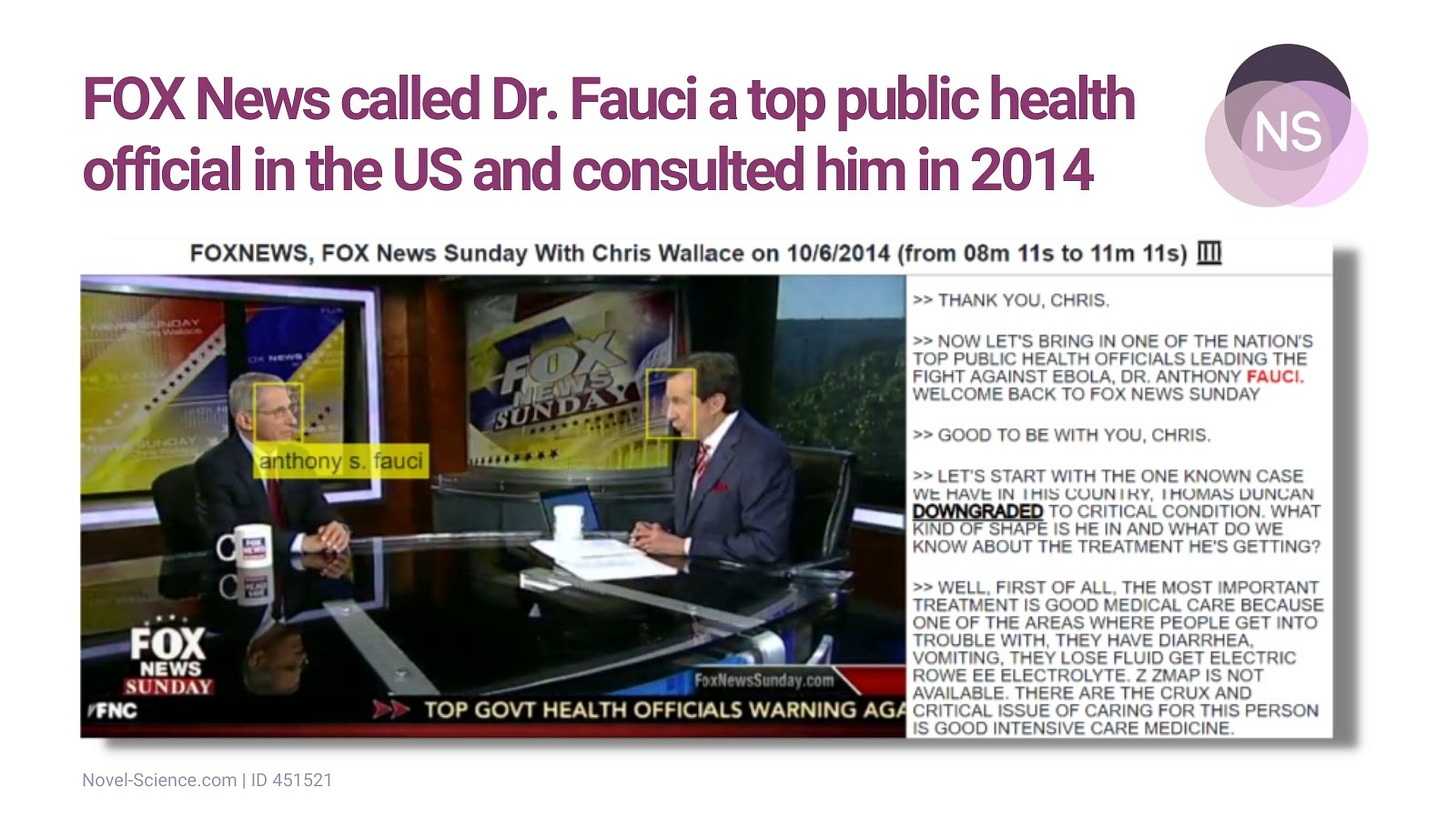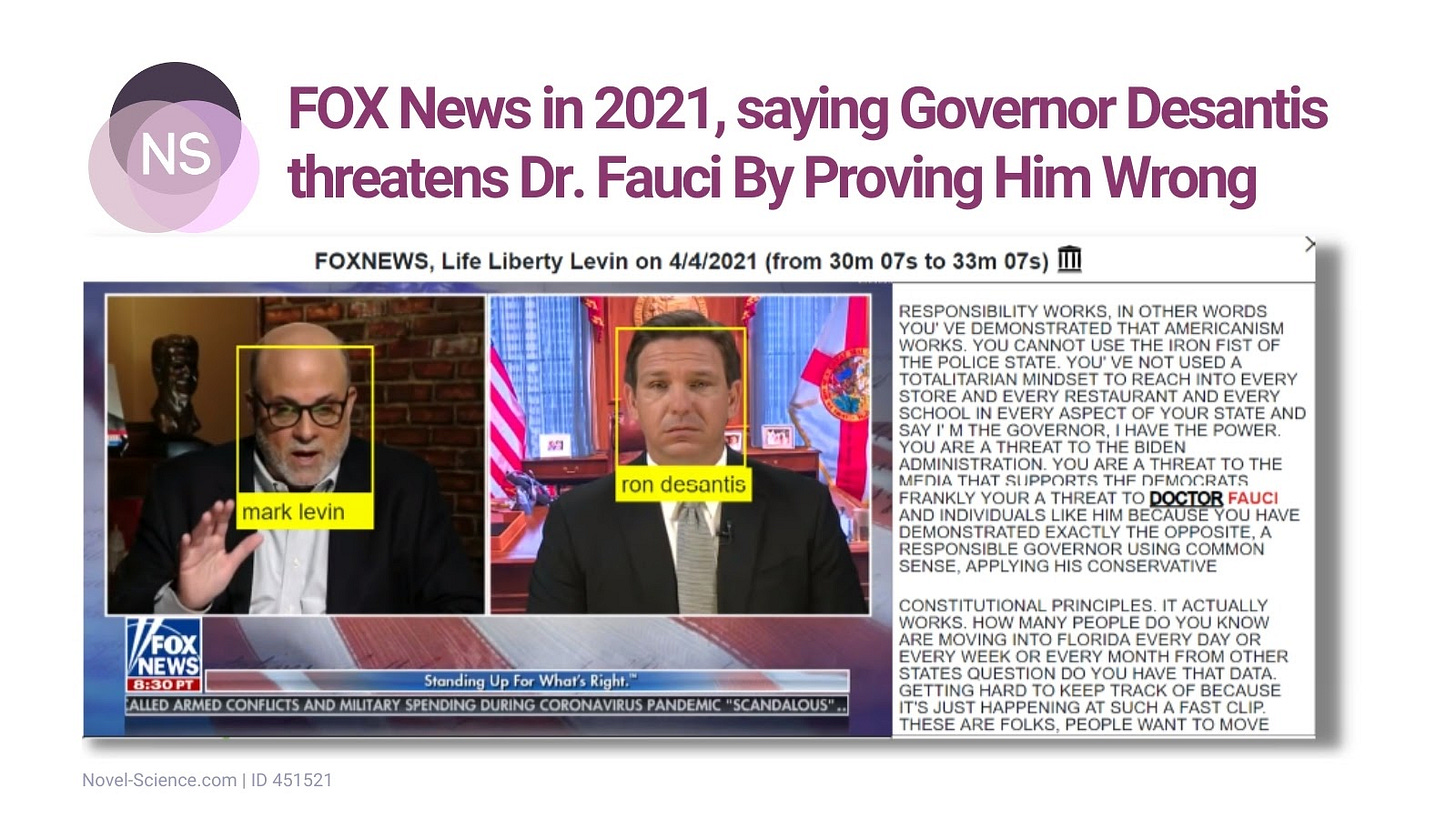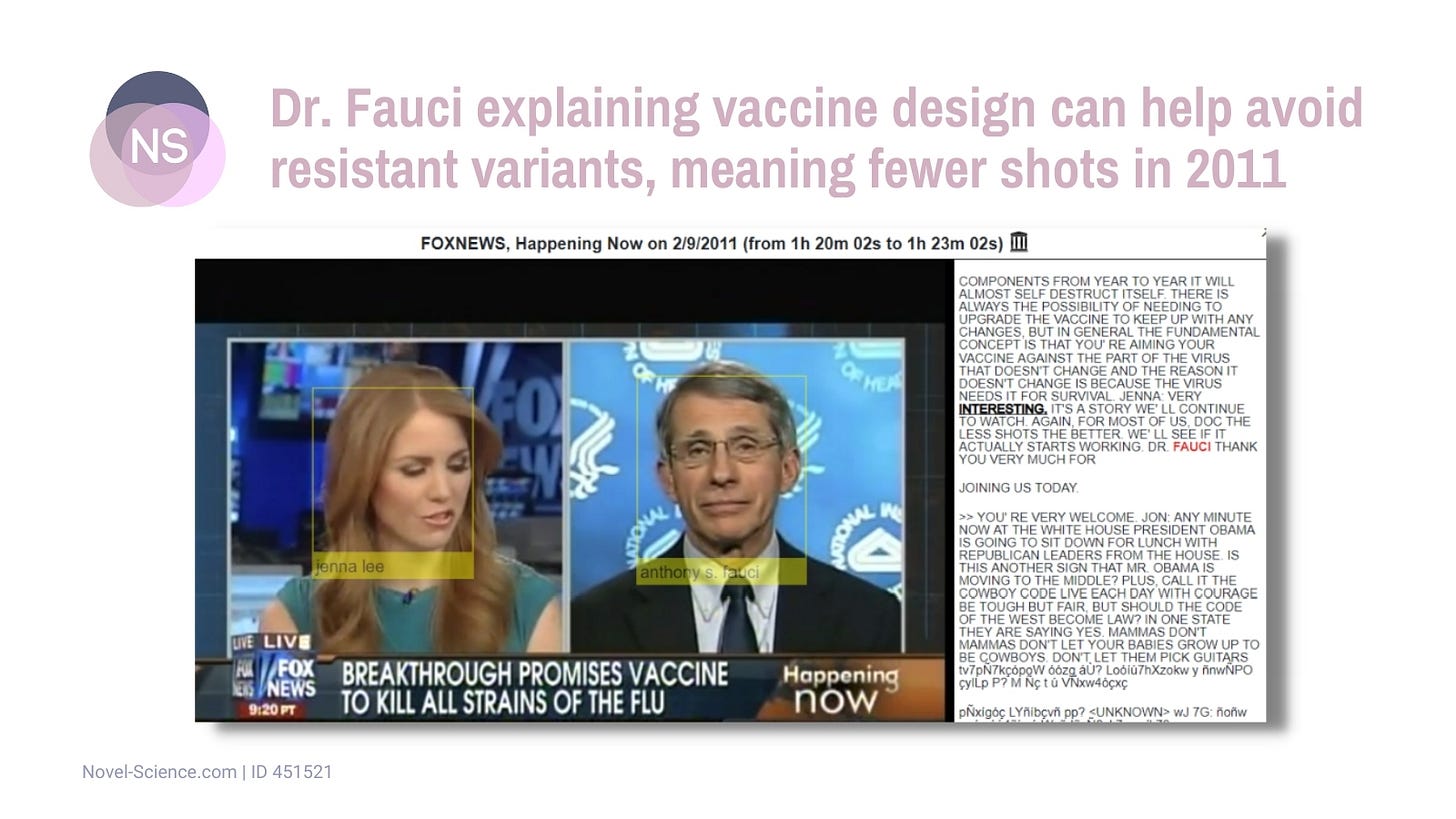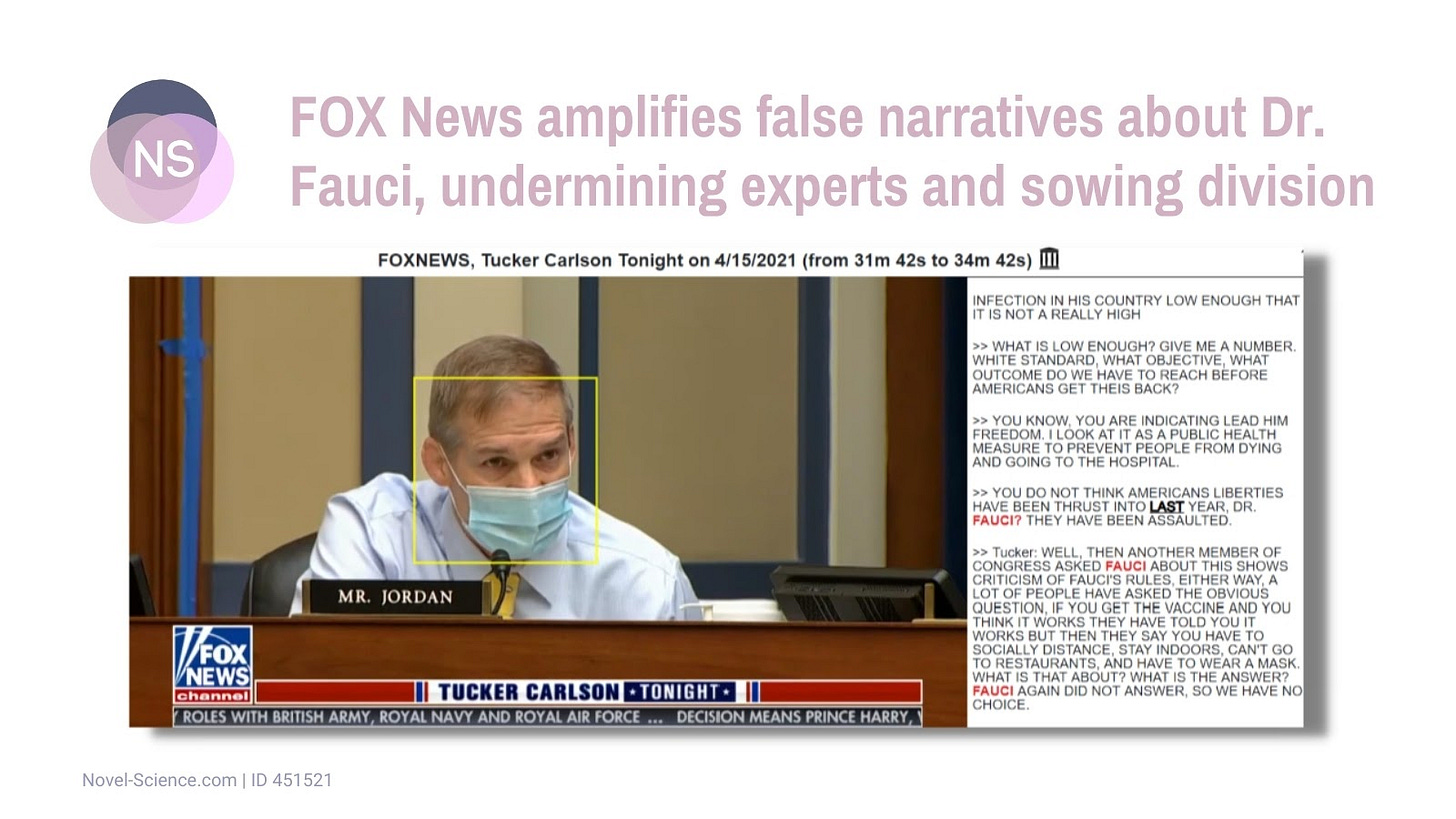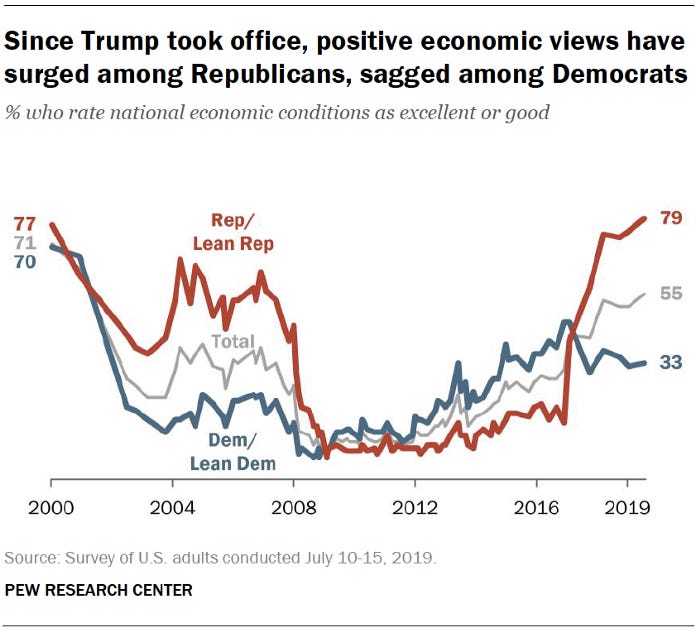Fox News' Attitude Toward Fauci Changed Radically. Here's How they Used to Cover Him.
We looked at Fox coverage of Dr. Fauci from 2010 to 2016, compared to the pandemic-related coverage of 2020 and 2021, using the Stanford TV analyzer.
Between Jan 25, 2020, and today, Fox News undermined coronavirus science in 325+ segments, per @mmfa research. During those segments, Fox pushed at least 547 arguments undermining public health measures, confidence in health officials, vaccine efforts, or coronavirus facts and data.
The assertion that scientists were to blame and the data from Media Matters for America, led me to examine the difference in Fox coverage of Dr. Fauci from 2010 to 2016, compared to the pandemic-related coverage of 2020 and 2021, using the Stanford TV analyzer.
Then
Today
Then
Today
Then
Today
Fauci goes back much further than that. He would be like our version of Queen Elizabeth if the queen had been a scientist that quietly battled infectious disease for the UK.

President George W. Bush liked Fauci so much he put a Medal of Freedom on him in 2007—the two weathered SARS together, Fauci helped Bush and Cheney understand the threat of pandemics, which concerned Bush especially because he feared Americans would not be prepared. Count them—two, and not one medal, President Bush saw Fauci receive, with one expressly given by him.
"I am concerned about what an avian flu outbreak could mean for the United States and the world," Bush said at a White House news conference.
Not everything was perfect, of course. Ring vaccination appears to have been a little confusing because Cheney insisted on a 330 million-dose stockpile of the smallpox vaccine, which is way more than we need, but I digress.
Here’s even younger Dr. Fauci with Bush Sr. but it doesn’t stop there. No, Dr. Fauci is the Benjamin Button of the NIH in this post.

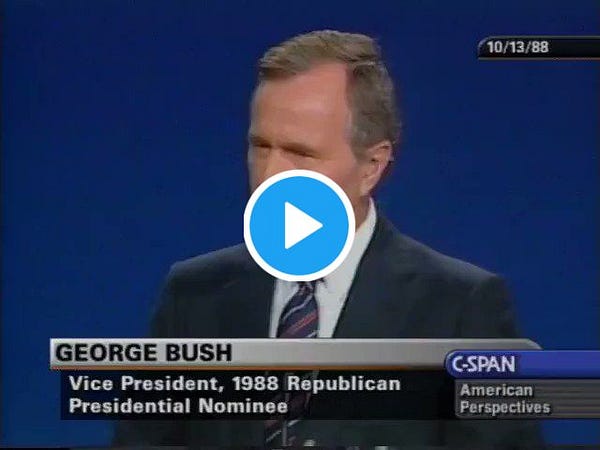
That brings us back to the AIDS crisis. Activists asserted that Fauci and the White House were moving too slowly. Protestors voiced their outrage and called on Fauci to resign while dressed as the grim reaper.
Authorities came to arrest protestors that day, but Fauci said no. He asked that they not be arrested and asked to meet with protest leaders. He listened to their concerns and acted on them, turning many detractors into friends.
“What Fauci remembers about the demonstration, and the demonstrators themselves, was the sense of layers: theatricality, genuine anger, but also an underlying core of pain.
Like Carol Moskowitz, he mentions their clothing first.
“They were dressed funny; they had all these strange outfits; and they were screaming and cursing and yelling,” he recalls. “And I looked at them, and I saw people who were in pain.
I didn’t see people who were threatening me, I saw people who were in pain. And that’s exactly what I saw, and I was very moved by the pain. Boy, they must really be hurting for them to do this. And I think I conveyed that to them, and they saw that that’s how I was feeling toward them.”
—Donald N.S. Unger, from “I saw people in pain” for Holy Cross Magazine
What followed was likely the first time someone had seriously included a marginalized community in science policy. He wasn’t meeting their needs, but he wanted to, so he listened.
Professionals from all fields and political ideologies came to Fauci’s defense in 2020, alongside his critics. Those who have disagreed with him professionally spoke up when the blows went low.

Alright, just one more picture of an even younger Fauci.
Back to what has sown distrust in vaccines
Some have argued that messaging from experts caused the public’s vaccine hesitancy (this is one I’ve encountered in person), but that doesn’t logically follow the evidence.
This stance also ignores what we know about the opinion of political elites and followers, something it seems unlikely elected officials would be ignorant concerning. People reported a high degree of trust in scientists in 2018, though that has likely declined some because of the politicization of science and the unfavorability of some of the scientific recommendations.
We have a tendency toward the stance of political figures who share our views, especially on topics too complicated for us to assess on our own. This happens despite Americans simultaneously reporting low levels of trust in politicians.
Economic outlook by party shows that our perception does not always align with reality. The economy under Obama recovered steadily, and the economy continued positive trends into Trump's Presidency, but partisan outlooks don't reflect that.
Bottom Line
If scientists mixed messaging were to blame for the vaccine hesitancy, the effect would not be so starkly partisan. The data clarify the issue, whatever it may be is unlikely to be on the science end of the equation.
This blog post is based on an excerpt from the Hoaxlines newsletter #5.16.21.

